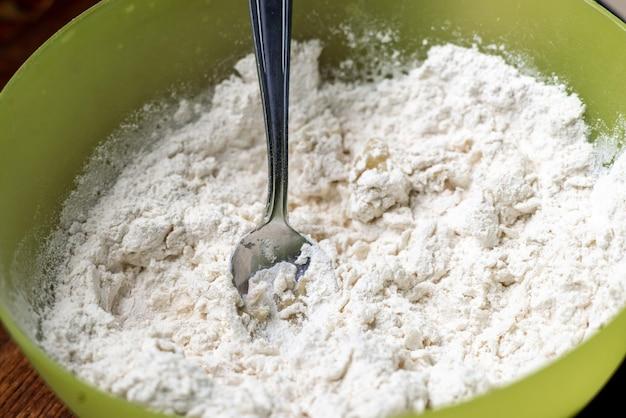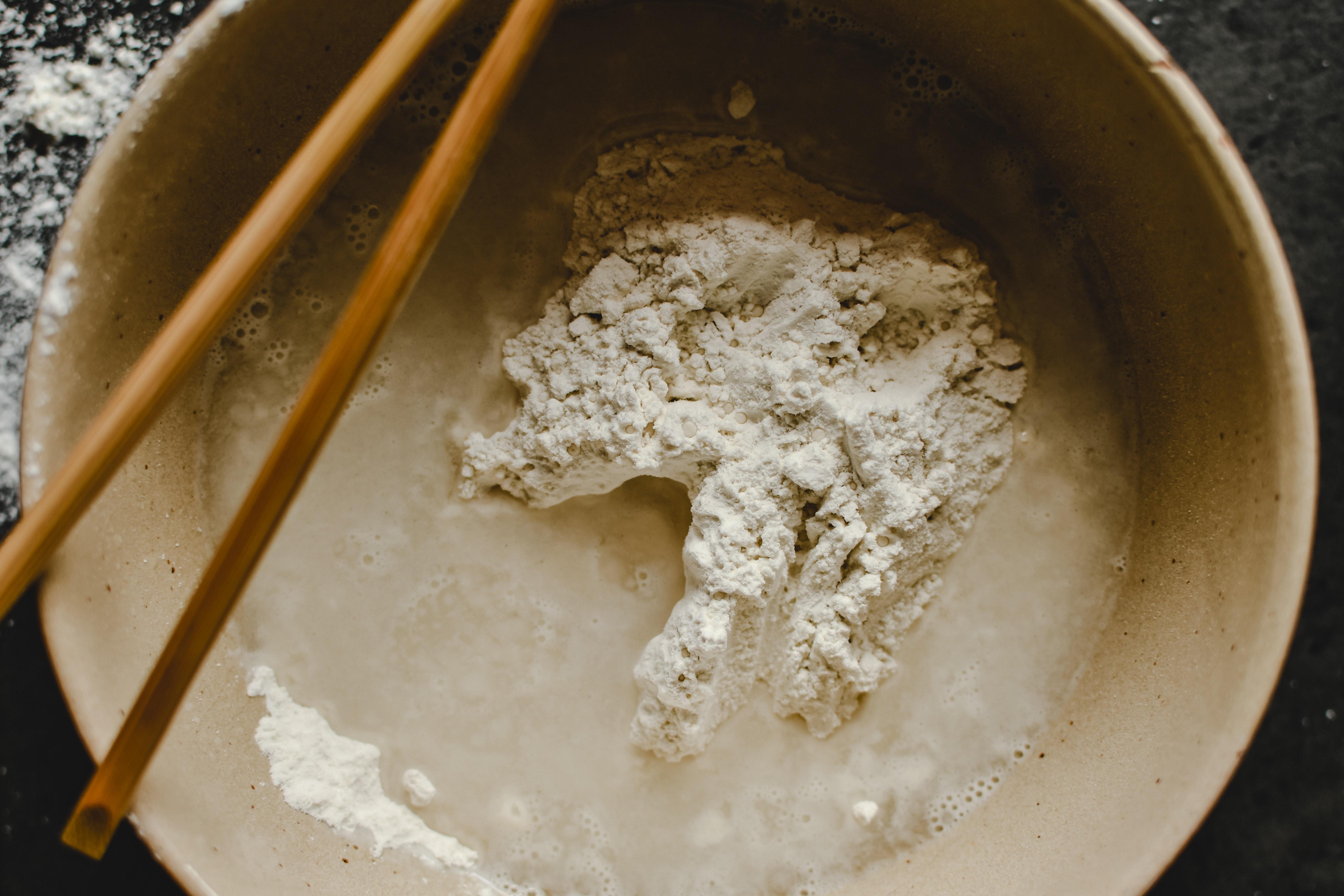Are you thinking about embarking on a home decor project and wondering if you can use flour and water as wallpaper paste? Look no further, because we’re here to discuss this age-old DIY technique and whether it’s a viable option in the modern world. Mixing flour and water has been a go-to method for creating a sticky substance resembling glue for various crafts and activities. But can it really hold your wallpaper in place for the long term? In this blog post, we’ll explore the pros and cons of using flour and water as wallpaper paste, as well as alternative options and tips for achieving the best results.
So, what does mixing flour and water actually make? The mixture creates a thick, gooey substance that, when applied to paper, can act as an adhesive. It has been used for centuries in various artistic ventures, including papier-mâché projects and homemade crafts. However, when it comes to wallpapering, it’s important to consider whether this simple concoction can hold up against the test of time and all the challenges that come with hanging wallpaper.
Before we dive deeper into this topic, let’s explore other alternatives to traditional wallpaper paste. Depending on your needs and preferences, you might want to discover how to stick wallpaper without paste or even explore unconventional options like nail polish. But for now, let’s weigh the options and evaluate the potential of using flour and water as wallpaper paste.
Can You Use Flour and Water as Wallpaper Paste
The Stickiness Dilemma: Flour and Water as Wallpaper Paste
If you’re a DIY enthusiast or a budget-conscious homeowner looking to spruce up your space, you might have wondered whether you can use flour and water as wallpaper paste. After all, flour and water are commonly found ingredients in any kitchen, right? Let’s dive in and see if this unconventional hack holds up or if it’s just a recipe for disaster.
The Flour-Water Mashup: A Cheaper Alternative
We’ve all been there – you want to give your walls a fresh coat of design, but the idea of splurging on wallpaper paste doesn’t exactly fit your budget. Enter the flour and water combo. It sounds like a frugal homeowner’s dream come true, but is it too good to be true?
The Science Behind Wallpaper Paste
Wallpaper paste is specifically formulated to provide the perfect balance of adhesion and slide, ensuring that your wallpaper sticks securely to the wall without wrinkling or peeling off. It contains a mix of various chemicals like methylcellulose, starch, and fungicides, which create a highly effective adhesive solution. So where does flour and water fit into the equation?
Flour and Water: Sticky Goo or Wallpaper Woe
While flour and water may have their uses in the kitchen, using them as a substitute for wallpaper paste might not be the smartest choice. Here’s why:
1. Lack of Adhesive Power
Flour and water alone lack the necessary adhesive strength to hold up wallpaper. The paste needs to be able to firmly grip the wallpaper and the wall, ensuring a seamless and long-lasting bond. Unfortunately, a mix of flour and water tends to result in a weak and non-durable adhesive. Your wallpaper might end up peeling off in no time, leaving you with a messy and unsightly situation.
2. Prone to Mold and Mildew
Without the antimicrobial properties found in proper wallpaper paste, a flour and water mixture can become a breeding ground for mold and mildew. These pesky fungi thrive in moist environments, and the combination of flour and water creates an ideal environment for their growth. Imagine the horror of waking up to moldy wallpaper – it’s the stuff nightmares are made of!
3. Time-consuming Removal Process
If you decide to forge ahead and use flour and water as your wallpaper paste, be prepared for an arduous removal process down the line. Unlike commercial wallpaper paste, which is formulated to be easily removable, the flour and water mixture can become stubbornly stuck to your walls. This means extra hours spent scraping and scrubbing, potentially damaging your walls in the process.
A Flourishing Conclusion
While it may be tempting to embark on a DIY adventure using flour and water as wallpaper paste, it’s best to resist the urge. Investing in proper wallpaper paste will save you time, frustration, and potentially costly repairs in the long run. So, set aside the flour for baking and the water for drinking – your walls will thank you!
(Word count: 536)
FAQ: Can You Use Flour and Water as Wallpaper Paste
[Blog Introduction]
Can Flour and Water Be Used as Wallpaper Paste
If you find yourself low on wallpaper paste, you might be wondering if you can substitute it with a homemade mixture of flour and water. Let’s delve into the frequently asked questions surrounding this unconventional wallpaper pasting method.
What Does Mixing Flour and Water Make
Answer: Mixing flour and water creates a sticky concoction commonly referred to as glue. This homemade adhesive has been used for centuries in various applications, including arts and crafts.
How Do You Stick Wallpaper Without Paste
Answer: If you don’t have wallpaper paste on hand, fear not! There are alternative methods to stick wallpaper. You can try using double-sided tape, liquid starch, or even a spray adhesive. Each of these methods has its pros and cons, so be sure to research and choose the method that best suits your specific wallpaper and surface.
Can You Use Nail Polish as Glue
Answer: Nail polish is primarily designed for beautifying your nails, rather than serving as an adhesive. While the adhesive properties of nail polish can vary, it’s not recommended to use it as a substitute for glue or wallpaper paste. Stick to tried and tested options for your wallpapering needs.
How Do You Make Wallpaper Paste
Answer: Making wallpaper paste from scratch is simpler than you might imagine. Here’s a quick recipe to create your own homemade wallpaper paste:
1. In a saucepan, whisk together 1 part flour and 4 parts water.
2. Heat the mixture over low heat until it thickens, stirring continuously to prevent lumps.
3. Once the mixture reaches a smooth and thick consistency, remove it from the heat and let it cool.
4. Your homemade wallpaper paste is now ready to be used!
How Long Do You Leave Paste on the Wallpaper Before Hanging
Answer: After applying wallpaper paste, it’s essential to let it “book” or rest for a specific duration. The typical recommendation is to allow the paste to rest for 5 to 10 minutes. This resting period allows the paste to activate and become tacky, ensuring a stronger bond when hanging the wallpaper.
Will Spray Adhesive Work on Wallpaper
Answer: Spray adhesive can indeed work on wallpaper, but it’s crucial to choose the right type of adhesive for your specific wallpaper material. Read the instructions on the spray adhesive carefully to ensure compatibility. Additionally, testing the adhesive on a small, inconspicuous area of the wallpaper is advisable to avoid any unwanted damage or discoloration.
Can Wallpaper Paste Be Used as Size
Answer: While wallpaper paste and size are both adhesives used in the realm of wallpapering, they serve different purposes. Wallpaper paste is used to adhere wallpaper to walls, while size is applied directly to the wall surface to create a smooth and sealed base for wallpaper installation. Therefore, wallpaper paste cannot be used as a substitute for size.
What Is the Best Adhesive for Wallpaper
Answer: The best adhesive for wallpaper largely depends on the type of wallpaper and the wall surface you are working with. Traditional wallpaper paste is often the go-to choice for most wallpapers, as it offers reliable adhesion and is readily available. However, it’s essential to consult the manufacturer’s instructions for your specific wallpaper to determine the most suitable adhesive.
What Is a Good Substitute for Glue
Answer: If you find yourself in need of a glue substitute for your paper-based projects, options like tape, double-sided adhesive sheets, or even cornstarch paste can come in handy. These alternatives can provide temporary or permanent adhesion, depending on your needs.
Do You Need Glue for Wallpaper
Answer: Yes, glue (commonly known as wallpaper paste) is an essential component for applying wallpaper. Wallpaper paste ensures a strong bond between the wallpaper and the wall surface, allowing for a smooth, long-lasting installation.
Can You Use Gorilla Glue on Wallpaper
Answer: While Gorilla Glue is a powerful adhesive, it is not recommended for use directly on wallpaper. The strong bond it creates could damage or tear the delicate surface of the wallpaper during application or removal. Stick to using adhesive products specifically designed for wallpapering.
How Do You Make Strong Glue with Flour
Answer: To make a stronger glue using flour, you can add a few simple ingredients to the basic flour and water mixture. Here’s a recipe for creating a stronger homemade glue:
1. In a saucepan, combine 1 cup of flour, 1/4 cup of sugar, and 1 teaspoon of vinegar.
2. Gradually whisk in 3 cups of water until the mixture is smooth and free of lumps.
3. Cook the mixture over low heat, stirring constantly, until it thickens to your desired consistency.
4. Remove the mixture from the heat and allow it to cool before using.
Do I Need Special Paste for Paste the Wall Wallpaper
Answer: Paste the Wall wallpaper is designed to be hung without the need for wallpaper paste. This type of wallpaper has a specially formulated backing that allows you to apply the adhesive directly to the wall, rather than the wallpaper itself. Simply follow the manufacturer’s instructions provided with the Paste the Wall wallpaper for optimal results.
Is It Better to Use Glue or Flour for Papier-Mâché
Answer: When it comes to papier-mâché, traditional glue is often preferred over flour paste. Glue provides better adhesion, prevents mold growth, and results in a smoother finish compared to flour paste. Although flour paste can be used for simple papier-mâché projects, glue will yield superior results for intricate or long-lasting creations.
Why Do Flour and Water Make Glue
Answer: When flour is mixed with water, it creates a glue-like substance due to the presence of proteins called gluten. The gluten molecules form a sticky network within the mixture, leading to adhesive properties. This natural phenomenon has allowed people throughout history to utilize flour and water as a simple and effective adhesive.
How Do You Make Glue at Home Without Flour
Answer: If you find yourself without flour but still need glue for your creative endeavors, don’t fret! You can make a flourless glue by combining equal parts of cornstarch and water. Mix the two ingredients thoroughly until you achieve a smooth consistency. This cornstarch paste can serve as a substitute for flour-based glue in various applications.
Can I Use Paste on Pre-pasted Wallpaper
Answer: Pre-pasted wallpaper already has an adhesive backing activated by water. Therefore, there is no need to apply additional paste to the wallpaper itself. Simply activate the adhesive by dampening it with water, following the manufacturer’s instructions. Remember to carefully examine the guidelines provided with your pre-pasted wallpaper for optimal results.
How Do You Make Homemade Wallpaper Paste with Flour
Answer: Creating homemade wallpaper paste using flour is a simple process. Here’s a recipe to help you get started:
1. In a medium-sized saucepan, combine 1 cup of flour with 4 cups of water.
2. Whisk the mixture thoroughly, ensuring there are no lumps.
3. Cook the mixture over medium heat, stirring continuously until it thickens and reaches a smooth consistency.
4. Remove the saucepan from the heat and let the wallpaper paste cool before using it.
[Blog Conclusion]

